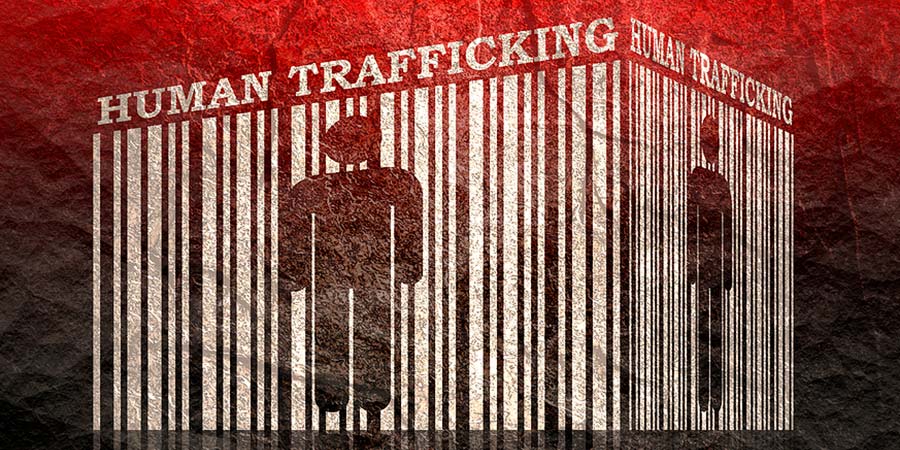In today’s world, where advancements in technology have connected people like never before, it is disheartening to acknowledge the grim reality of human trafficking. This thriving criminal industry preys on the most vulnerable members of our society, exploiting their rights and dignity. This blog post aims to shed light on the topic of human trafficking, providing an overview of this global issue and delving into the continuing education requirements related to human trafficking in Florida, Michigan, and Texas. By understanding the nature of this crime, we can contribute to the prevention and eradication of this heinous act.
What Is Human Trafficking?
Human trafficking, often referred to as modern-day slavery, involves the recruitment, transportation, and exploitation of individuals against their will. Victims are coerced or deceived into various forms of labor exploitation, such as forced labor, debt bondage, or sexual exploitation. The magnitude of this issue is alarming, with millions of men, women, and children falling victim to this crime worldwide.
Human Trafficking Statistics
According to recent data from the International Labour Organization (ILO), an estimated 40.3 million people worldwide are victims of human trafficking, including forced labor and sexual exploitation. Women and girls represent 71% of trafficking victims, with 1 in 4 victims being children. Furthermore, human trafficking generates billions of dollars in illegal profits annually, making it one of the fastest-growing criminal enterprises. These statistics underscore the urgent need for healthcare providers to be vigilant in identifying potential trafficking victims, offering trauma-informed care, and collaborating with law enforcement and advocacy organizations to combat this crime. By raising awareness about these staggering statistics and advocating for victim-centered approaches, we can contribute to the global efforts to eradicate human trafficking and support survivors on their path to recovery.
10 Facts about Human Trafficking
Here are 10 key facts about human trafficking:
- Definition: Human trafficking is defined by the United Nations Office on Drugs and Crime (UNODC) as the recruitment, transportation, transfer, harboring, or receipt of persons through force, fraud, or coercion for the purpose of exploitation.
- Global Impact: According to the International Labour Organization (ILO), an estimated 40.3 million people worldwide are victims of human trafficking, with women and girls comprising 71% of victims.
- Children at Risk: The United Nations Children’s Fund (UNICEF) reports that 1 in 4 victims of human trafficking is a child, highlighting the vulnerability of minors to exploitation.
- Profitability: The International Labour Organization (ILO) states that human trafficking generates approximately $150 billion in illegal profits annually, making it one of the most lucrative criminal enterprises.
- Health Consequences: Victims of human trafficking often suffer from physical injuries, malnutrition, sexual abuse, and mental health disorders, as documented by studies published in the Journal of the American Medical Association (JAMA).
- Control Tactics: Traffickers use various tactics such as threats of violence, debt bondage, and isolation to exert control over victims, as outlined by the U.S. Department of State’s Trafficking in Persons (TIP) Report.
- Diverse Settings: Human trafficking occurs in diverse settings, including urban areas, rural communities, and online platforms, as reported by the Polaris Project, a leading anti-trafficking organization.
- Role of Healthcare: The National Human Trafficking Hotline emphasizes the role of healthcare providers in identifying and assisting trafficking victims who may seek medical care.
- Signs of Trafficking: Recognizing signs such as unexplained injuries, inconsistent stories, and fearfulness is essential for healthcare professionals, as highlighted by the American College of Emergency Physicians (ACEP).
- Collaborative Efforts: Collaborative efforts involving healthcare providers, law enforcement agencies, NGOs, and policymakers are crucial in combating human trafficking, according to the Global Report on Trafficking in Persons by the United Nations Office on Drugs and Crime (UNODC).
By referencing reputable sources, healthcare professionals can enhance their understanding of human trafficking and contribute effectively to prevention, identification, and support for victims.
How to Prevent Human Trafficking
Here are key strategies on how to stop human trafficking:
- Raise Awareness: Educating the public and healthcare providers about the signs and consequences of human trafficking is crucial. Organizations like the National Human Trafficking Hotline offer training and resources for healthcare professionals to enhance awareness and response capabilities.
- Screening and Identification: Incorporating screening protocols into healthcare settings can help identify potential trafficking victims. The American Medical Association (AMA) advocates for routine screening for indicators of trafficking, such as unexplained injuries, inconsistent stories, and signs of trauma.
- Trauma-Informed Care: Providing trauma-informed care is essential for supporting trafficking survivors. The Substance Abuse and Mental Health Services Administration (SAMHSA) offers guidelines for healthcare providers to deliver compassionate and effective care to survivors.
- Collaboration: Collaborating with law enforcement agencies, nongovernmental organizations (NGOs), and social service providers is crucial in addressing human trafficking. The Department of Homeland Security (DHS) encourages multisector collaboration to enhance victim identification and prosecution of traffickers.
- Advocacy and Policy: Supporting legislative efforts and advocating for policies that prioritize victim protection and perpetrator accountability are essential steps. The Polaris Project and Human Trafficking Legal Center provide resources for healthcare professionals to engage in advocacy and policy change.
- Continuing Education: Ongoing education and training on human trafficking dynamics, legal frameworks, and victim-centered approaches are necessary for healthcare professionals. The World Health Organization (WHO) emphasizes the importance of continuous learning and capacity-building in combating human trafficking.
By implementing these strategies and collaborating with stakeholders, healthcare professionals can contribute significantly to stopping human trafficking, protecting vulnerable populations, and promoting human rights and dignity.
Human Trafficking Awareness Month
Human Trafficking Awareness Month, observed in January, serves as a crucial opportunity for nurses and healthcare professionals to raise awareness, educate communities, and advocate for action against this egregious violation of human rights. According to the U.S. Department of Health and Human Services (HHS), human trafficking affects millions of individuals worldwide, with devastating physical, psychological, and social consequences. This month provides a platform to highlight the prevalence of human trafficking, share information on identifying and assisting victims, and promote collaborative efforts among healthcare providers, law enforcement agencies, and advocacy organizations. Organizations such as the National Human Trafficking Hotline and the Polaris Project offer resources, training, and support for healthcare professionals to enhance their knowledge and response capabilities. By participating in Human Trafficking Awareness Month activities, healthcare professionals can contribute significantly to prevention, victim support, and the pursuit of justice for trafficking survivors.
Which U.S. States Mandate Continuing Education on Human Trafficking for Healthcare Professionals?
As of March 2024, several U.S. states have taken proactive measures to address human trafficking by implementing continuing education requirements for healthcare professionals. Florida, Michigan, and Texas have recognized the critical role of healthcare providers in identifying and assisting trafficking victims. These initiatives reflect a growing recognition of the importance of equipping healthcare professionals with the knowledge and skills needed to combat human trafficking and support survivors effectively.
What Is the Florida Continuing Education Requirement for Human Trafficking?
In Florida, recognizing the significance of awareness and understanding, the state has implemented mandatory human trafficking education for nurses and various professionals. Nurses, licensed healthcare providers, and massage therapists, for instance, are required to complete a one-hour continuing education course on human trafficking. This educational initiative plays a crucial role in identifying potential trafficking victims and offering them the support they desperately need.
What Is the Michigan Continuing Education Requirement for Human Trafficking?
Similarly, the state of Michigan has taken assertive steps to combat human trafficking through continuing education requirements. Licensed healthcare professionals, including nurses and others, are mandated to complete an approved course pertaining to trafficking awareness and identification. By equipping healthcare providers with the necessary knowledge, Michigan aims to enhance victim identification and subsequently protect and support survivors.
What Is the Texas Continuing Education Requirement for Human Trafficking?
Texas, the second-largest state in both population and land area, has recognized the urgency of addressing human trafficking. The state requires healthcare practitioners, psychologists, social workers, and other professionals to complete a human trafficking awareness training course. By integrating these continuing education requirements into various professional fields, Texas is instilling a comprehensive approach to tackling this issue and fostering a united front against human trafficking.
Human trafficking is a severe human rights violation that persists despite ongoing efforts to combat it. By comprehending the true nature of this crime and recognizing the signs, we can play an active role in its prevention and eradication. States like Florida, Michigan, and Texas have recognized the importance of education to raise awareness and enhance victim identification. With mandatory continuing education requirements, professionals in these states are equipped with the knowledge and tools needed to identify potential victims, provide support, and contribute to the overall fight against human trafficking.
For all other states, Human Trafficking Training is essential for nurses and healthcare professionals alike.
If you are a victim or suspect human trafficking, reports can be made to the National Human Trafficking Hotline by calling 888-373-7888 or by texting ‘BeFree’ to 233733.
Though progress is being made, eradicating human trafficking requires collaborative efforts from governments, civil society organizations, and individuals. Together, let us work toward a world where every human being can live in freedom, devoid of exploitation and oppression.
References:
- American Medical Association (AMA)
- Department of Homeland Security (DHS)
- Human Trafficking Legal Center
- National Human Trafficking Hotline
- Polaris Project
- Substance Abuse and Mental Health Services Administration (SAMHSA)
- U.S. Department of Health and Human Services (HHS)
- World Health Organization (WHO)
Sign up for our newsletter email list and like us on Facebook and Instagram to be among the first to know about all our special discounts and offers!
About Wild Iris Medical Education:
Wild Iris Medical Education, Inc., is a privately held, woman-owned company providing online healthcare continuing education. In 1998, we began offering online ANCC-accredited nursing continuing education courses and since then have expanded to provide CEUs for occupational therapists, physical therapists, paramedics, EMTs, and other healthcare professionals.
Accredited and Approved Nationwide.
High-quality CEU Courses since 1998.

Join Our More Than 750,000 Satisfied Customers Now!
High-quality, accredited, evidenced-based continuing education courses in an easy-to-use format designed for learning, from Wild Iris Medical Education. We’ve been providing online CE since 1998.



